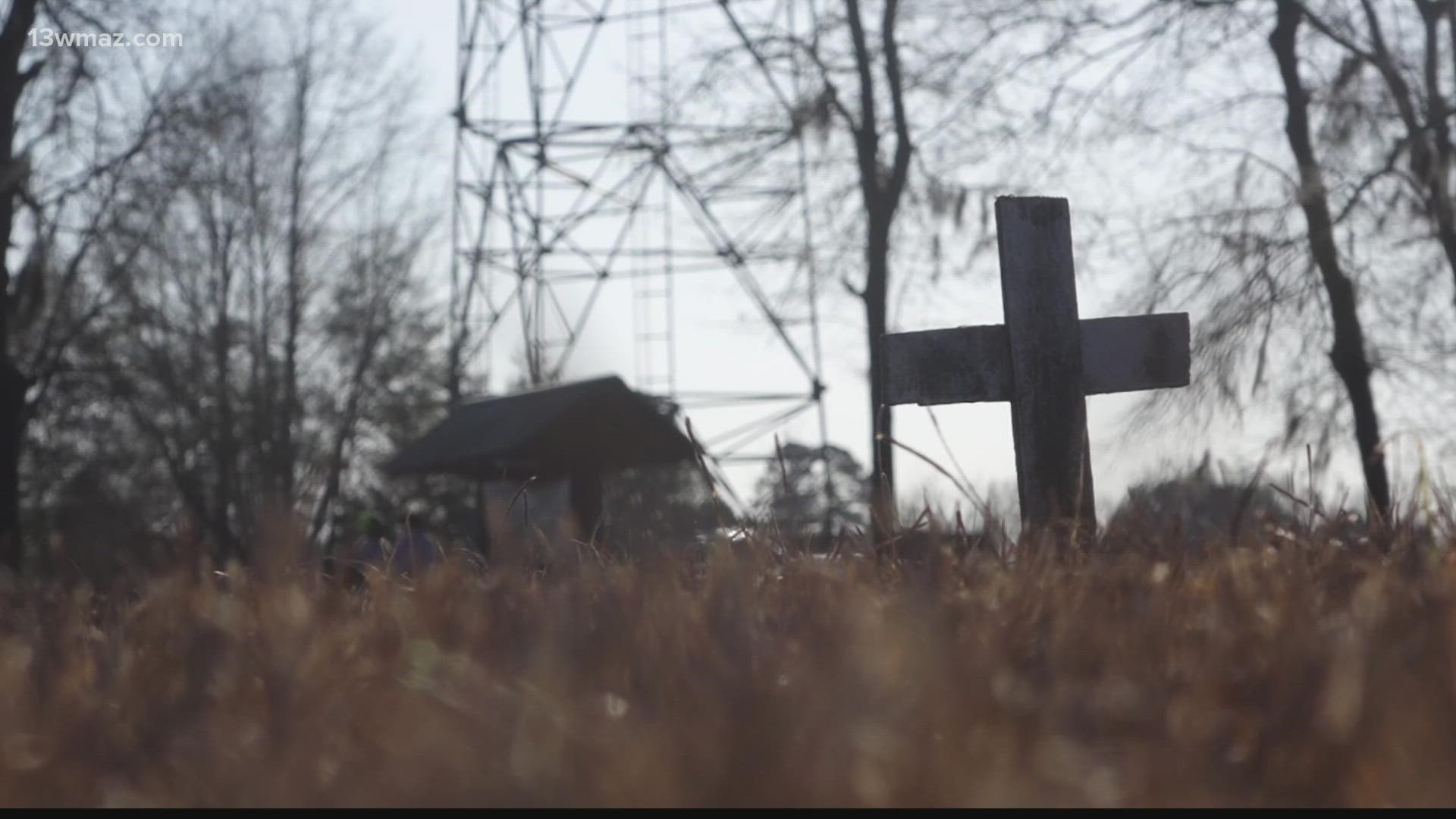DUBLIN, Ga. — As Black History Month comes to a close, we take you to Dublin, where two city cemeteries tell the story of racial segregation.
In 1906, Cross the Creek Cemetery was established for Black people to be buried. Close by, across the creek, you'll find Northview Cemetery, which was for White people. For decades, one cemetery was neglected. Today, family members are finding out their loved ones are resting there.
Tucked away in the City of Dublin, you'll find a visual tale of the historical racial divide of the town. On one side, a grand entrance, well-kept grounds, a mausoleum and decorative headstones. On the other side, broken headstones, uneven ground and hundreds of unmarked graves.
"Definitely seeing the other grave sites, and then seeing how it was, and still could be so much more beautiful, it is a shame," Sonya May Calvin said.
Calvin says her cousin recently discovered three family members who are buried at Cross the Creek.
"I was able to find my great grandmother, my grandfather's first wife, and an aunt that died as an infant," Edwin May said.
May says research on Ancestry.com helped him uncover a cemetery he never knew about.
"I could feel the breaths of my ancestors there, when I was there," May said.
"When we got here, just, immediately just driving on the grounds, it was a calmness and tranquility that came about, that is amazing and hard to describe," Calvin said.
More than 100 years after it was established, city leader Julie Driger learned about the cemetery. In 2013, she started the process, along with the City of Dublin to help uncover this piece of Black history.
"When I saw it, I knew something had to be done, because the city had to be represented like it was previously," Driger said.
Driger says the city paved a drive way for the cemetery because the only way in became impassible whenever the creek flooded. To honor each resting soul, a list all of the people buried at the cemetery was created.
"The crosses that you see are wooden crosses, and I had those crosses put down because of a lot of the graves did not have any identification," Driger said.
Driger says they used metal detectors to mark the graves they could find. For Calvin and May, the search for their ancestors continues.
"She is here, and I get a little emotional, because we don't know where her site is, but we just know that she is out here," Driger said.
While the work continues to beautify the cemetery, Calvin and May are elated their grandkids can see a part of their own history.
"To see that this beautiful place now resides with our ancestors and more, that is a great feeling," Sonya May Calvin.
The city is working to plant live oak trees at the cemetery and there already 11 oak trees planted there. Dublin is also working on funding for more permanent markers for the graves.
MORE BLACK HISTORY HEADLINES

